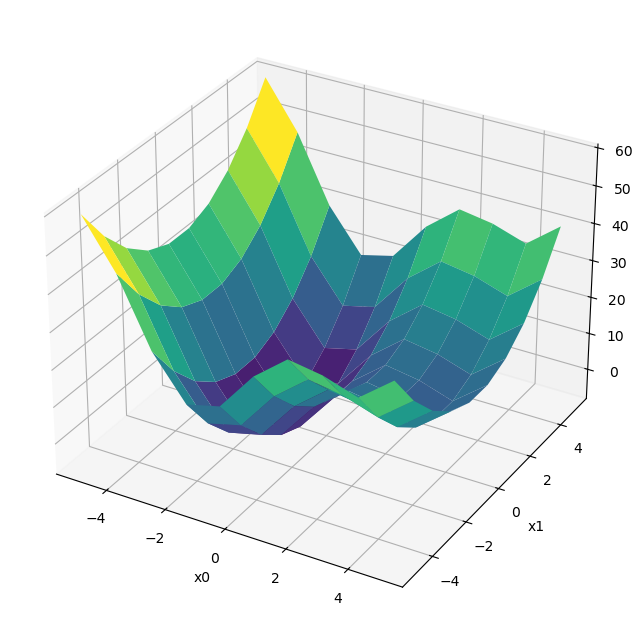8. Optimization: Exercise#
Name:
Date:
1. Try with you own function#
Define a function of your interest (with two or more inputs) to be minimized or maximized.
It can be an explicit mathematical form, or given implictly as a result of simulation.
import numpy as np
import matplotlib.pyplot as plt
%matplotlib inline
# This is just an example. Please define your own function.
def fun(x, a=1.):
"""sine in quardatic valley"""
x = np.array(x)
y = (x[0]**2+x[1]**2) + a*np.sin(x[0])
return y
Visualize the function, e.g., by surface plot or contour plot.
w = 5
N = 10
x = np.linspace(-w,w,N)
x0, x1 = np.meshgrid(x, x)
#x2 = np.array(x2).transpose(2,1,0) # (x0,x1) in last dimention
y = fun((x0, x1), 10)
fig = plt.figure(figsize=(8, 8))
ax = fig.add_subplot(projection='3d')
ax.plot_surface(x0, x1, y, cmap='viridis')
plt.xlabel("x0"); plt.ylabel("x1");

Mixmize or minimize the function using two or more optimization algorithms, e.g.
Gradient ascent/descent
Newton-Raphson method
Evolutionary algorithm
scpy.optimize
and compare the results with different starting points and parameters.
Option) Set equality or inequality constraints and apply an algorithm for constrained optimization.


